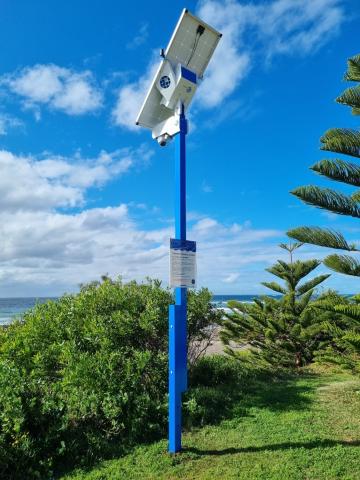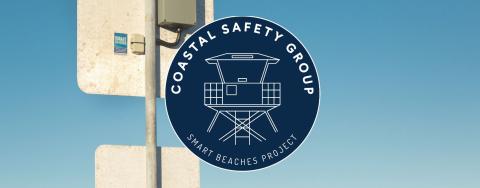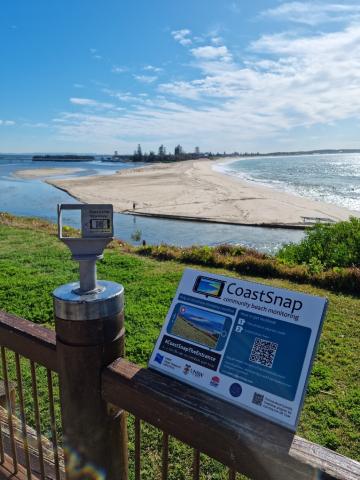Monitoring Our Coastlines
CoastSnap is a global citizen science project to capture our changing coastlines. No matter where you are in the world, if you have a smartphone and an interest in the coast, we welcome you to participate!
Coastal Monitoring
Central Coast Council is continually improving the way we monitor our dynamic stretch of coastline to better understand the natural coastal processes, improve our management, reduce risk to the community from coastal hazards and identify new coastal issues or beach changes.
Our beaches are one of the region’s most valued assets and provide significant social, environmental and economic benefits to residents, businesses and visitors alike. They are, however, also exposed to a range of coastal hazards and the Central Coast Local Government Area has one of the highest risk exposures to coastal erosion in New South Wales.
Council uses a variety of data collection methods including aerial drones, traditional beach surveys, satellite imagery, fixed cameras networks and citizen science initiatives. Council uses these methods to capture and monitor changes in shoreline positions, beach volumes, slope and cliff instability and dune vegetation over time and following severe weather events. At the entrances to our Intermittently Closed and Open Lakes or Lagoons (ICOLLs), we also monitor sand berm levels, shoaling and channel configurations to assist in managing the entrances in accordance with their relevant plans.
Drone Monitoring
Council uses specialised mapping drones to monitor beach and estuary entrance dynamics, wetlands and foreshores at a very high spatial resolution enabling detection of even small changes in these environments. Mapping drones use high precision RTK GPS resulting in positioning accuracies of 2-3cm. Drones supplement spatial data from other sources such as aerial & satellite imagery, fixed shoreline and entrance monitoring cameras and longer-term beach monitoring programs such as the NSW Beach Profile database.
Here’s an example of a drone footage recorded at Soldiers Beach during a survey of the construction of the replacement northern beach access stairs and vehicle access ramp in June 2024.
Tuggerah Lakes 360 Panorama
Explore a 360-degree panorama view of the entrance to Tuggerah Lakes captured in October 2023
Cockrone Lagoon - Entrance Closed
Explore a 360-degree panorama view of the Macmasters and Copacabana Beach embayment captured in June 2024. At this time, the entrance to Cockrone Lagoon was in a closed state.
Cockrone Lagoon - Entrance Open
Compare the view above to the same location in July 2024 during which the entrance to Cockrone Lagoon was open to the ocean.
ICOLL Entrance Monitoring
Council has a responsibility to manage flood risk and accordingly manages the entrances of our Intermittently Closed and Open Lakes and Lagoons (ICOLLs) to reduce the risk of flooding and associated impacts on the community.
Council has installed new solar-powered and wireless camera platforms to remotely monitor the environmental conditions and channel states at these entrances to ensure staff always have up-to-date information. This information is vital for effective management as ICOLL entrances are extremely dynamic and the sand barriers and channel compartments are constantly shaped by catchment and coastal processes.
These advanced cameras support a network of water level and rainfall gauges and progressive Flood Intelligence Tools that can model predicted flood levels in near real-time, to ensure Council remains prepared, informed and ready to intervene when the relevant trigger levels are met.

Smart Beaches Project – Coastal Monitoring
Council has recently installed three Smart Beaches Cameras supplied from the Smart Beaches project and funded by the NSW Government.
These cameras will assist Council’s lifeguards and coastal management teams to monitor current conditions, changes to the coastline and beach usage aimed at improving beach safety.
Find out more about the Smart Beaches program at: https://coastalsafetygroup.com.au/smartbeaches

Emergency Response Beacons (ERBs)
A number of Emergency Response Beacons (ERBs) have been installed at high risk drowning locations on the Central Coast by Surf Life Saving New South Wales.
An Emergency Response Beacon, or ERB, is an autonomous emergency response tool being rolled out at identified ‘black spot’ locations across the state to assist in lifesaving activities and improve beach safety.
The ERBs use the latest mobile technology to, when engaged by a person on the beach, communicate between the Surf Life Saving NSW State Operations Centre (SOC) and the person, allowing the SOC operator to quickly gather important information, issue instructions or provide reassurance in an emergency situation. Their use can dramatically reduce response time at unpatrolled and isolated beach locations.
https://www.surflifesaving.com.au/emergency-response-beacons/
Satellite Imagery
Satellite imagery is a powerful tool that allows Council to monitor our coast at a more regional scale without the need for intensive field surveys.
One example of how satellite imagery is used is that we can extract shoreline positions along our beaches by identifying the boundary between water and sand in the images. This shoreline information can then be compared across different points in time to quickly assess impacts from severe weather events, to identify beaches with low sand volumes that may be at an increased risk of coastal erosion or observe longer term changes.
Thanks to a free online tool developed by Geoscience Australia’s Digital Earth Australia (DEA) Program, you can also explore Australia’s dynamic coastline and see how this looks like first hand.
The timelapse below, created using satellite images taken between 2016 and 2024, provides a snapshot of how dynamic the entrance to Tuggerah Lakes is and how it changes over time in response to prevailing coastal and catchment processes.
In this timelapse, you can observe how dynamic our beaches are as satellite images shows North Entrance Beach fluctuating and changing in response to coastal processes.
What is CoastSnap?
CoastSnap is a global citizen science project to capture our changing coastlines. No matter where you are in the world, if you have a smartphone and an interest in the coast, we welcome you to participate!
The more photos we have of a particular site, the better our understanding becomes of how that coastline is changing over time.

How to get involved:
-
CoastSnap relies on repeat photos at the same location to track how the coast is changing over time due to processes such as storms, rising sea levels, human activities and other factors.
Using a specialised technique known as photogrammetry, CoastSnap turns your photos into valuable coastal data that is used by coastal scientists to understand and forecast how coastlines might change in the coming decades. Photogrammetry enables the position of the coastline to be pinpointed from your snaps to an accuracy similar to that of professional coastal survey teams. All we ask is that you take the photos at the same location (by using one of our official CoastSnap camera cradles or a do-it-yourself adaptation) and record the precise photo time in the App.
-
1. Download the app
Get the free Citizen Science App on Google Play for Android or in the Apple App Store.
2. Register
Create an account with your email address to keep track of your snaps.
3. Start snapping
Visit any CoastSnap location and follow the instructions on the sign to start contributing data. Once you have uploaded you snaps, they'll appear in the map below!
-
There are currently three CoastSnap locations setup on the Central Coast where anyone with a smartphone can get involved. Each monitoring station includes the instructions and phone cradle
Ocean Beach - The Esplanade / Barrenjoey Road - Ettalong Point. #CoastSnapOB
Terrigal Lagoon / Wamberal Beach – Terrigal Drive, Terrigal. #CoastSnapWamberal
The Entrance Channel - Marine Parade, The Entrance. #CoastSnapTheEntrance